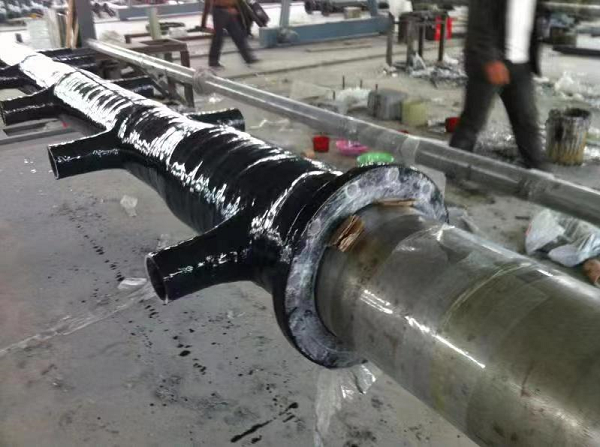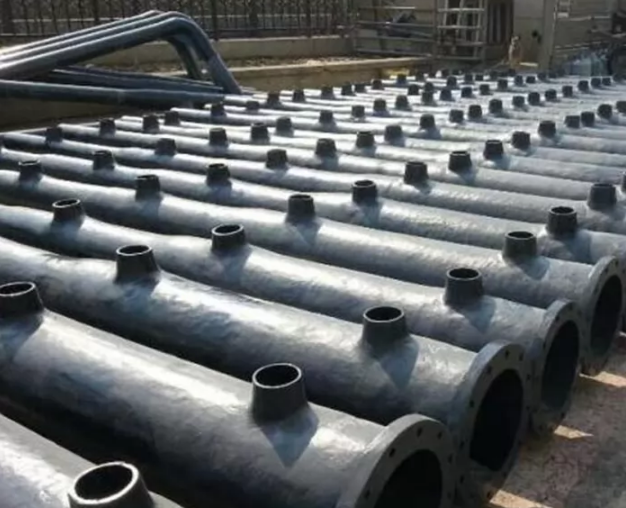FRP spray pipe has been widely used in urban water supply and drainage, factory sewage treatment, seawater desalination, gas transportation and other industries. It has many advantages such as strong corrosion resistance, smooth inner surface, low energy consumption, long service life, easy transportation and installation, no need for maintenance, and low comprehensive cost.
FRP slurry spray pipe is usually manufactured in segments and sub-assemblies during the manufacturing process, which is easy to transport. In the field installation, winding and bonding process is used to connect the parts.
This winding bonding process has the advantages of high joint strength, small leakage, simple process, easy construction and low cost. The specific size of the glass fiber surface felt can be determined according to the actual pressure and diameter. Due to the high thermal expansion of FRP, the construction requires measuring, cutting, assembling and bonding at the same ambient temperature.

The structure of the outer surface of the wound part should be consistent with the outer surface of the tube to ensure that the performance of the wound part is consistent with the overall performance of the tube. In addition, to prevent the slurry from corroding the butt end face of the pipe, the butt joint needs to be filled with resin mortar and the resin used to arrange the cement is required to be consistent with the pipe resin. If necessary, the outermost layer can be waxed to prevent air entry and cracking.

Before installation, groove the position of the pipe joint corresponding to the foundation so that the whole bottom of the pipe body is placed on the in-situ soil or sand bedding layer with uniform force. FRP spray pipe transportation cost is lower, saving fuel consumption and other expenses.
When installing, medium and small diameter FRP spray pipe generally do not need heavy machinery, and some can even be carried manually to improve the installation speed.
After long-term use, the curing of sludge and rust inside the pipe will cause the original pipe diameter to become smaller and cannot meet the smooth discharge of the maximum discharge flow. The sediment at the bottom of the pipe always raises the downstream of the drainage pipe, resulting in a reduced slope of the pipe. The flow rate flattens out and the clogging of the FRP spray pipe increases exponentially, interrupting the drainage function at any time. Therefore, regular maintenance is required.
Contact Weitong to find more about our FRP products!